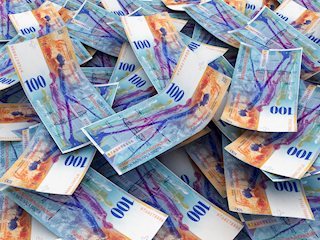USD/CHF drops to near 0.9100 amid heightened geopolitical tensions
|
- USD/CHF trades on a softer note around 0.9110 in Friday’s early European session.
- The expectations of fewer rate cuts by the Fed in 2025 might lift the USD.
- Geopolitical risks could boost the safe-haven flows and cap the upside for the pair.
The USD/CHF pair weakens to near 0.9110, snapping the four-day winning streak during the early European session on Friday. The safe-haven flows demand amid the persistent geopolitical tensions in the Middle East and the ongoing Russia-Ukraine conflict boosts the Swiss Franc (CHF) against the Greenback.
On Thursday, Joe Biden reportedly discussed plans to attack Iran’s nuclear facilities in the event Tehran moved closer to building a nuclear bomb before Donald Trump’s inauguration on January 20, three sources with knowledge of the issue tell Axios. Investors will closely monitor the development surrounding the geopolitical risks. Any signs of escalation could lift the CHF and create a headwind for USD/CHF.
Meanwhile, inflation in the U.S. remains stubbornly above the Federal Reserve’s (Fed) 2% target, suggesting that the US central bank will likely leave interest rates here higher for longer compared to other major central banks. The Fed has now indicated only two interest rate reductions for this year, down from an earlier projection of four rate cuts. The projection of fewer interest rate cuts by the Fed this year could strengthen the USD further.
Swiss Franc FAQs
The Swiss Franc (CHF) is Switzerland’s official currency. It is among the top ten most traded currencies globally, reaching volumes that well exceed the size of the Swiss economy. Its value is determined by the broad market sentiment, the country’s economic health or action taken by the Swiss National Bank (SNB), among other factors. Between 2011 and 2015, the Swiss Franc was pegged to the Euro (EUR). The peg was abruptly removed, resulting in a more than 20% increase in the Franc’s value, causing a turmoil in markets. Even though the peg isn’t in force anymore, CHF fortunes tend to be highly correlated with the Euro ones due to the high dependency of the Swiss economy on the neighboring Eurozone.
The Swiss Franc (CHF) is considered a safe-haven asset, or a currency that investors tend to buy in times of market stress. This is due to the perceived status of Switzerland in the world: a stable economy, a strong export sector, big central bank reserves or a longstanding political stance towards neutrality in global conflicts make the country’s currency a good choice for investors fleeing from risks. Turbulent times are likely to strengthen CHF value against other currencies that are seen as more risky to invest in.
The Swiss National Bank (SNB) meets four times a year – once every quarter, less than other major central banks – to decide on monetary policy. The bank aims for an annual inflation rate of less than 2%. When inflation is above target or forecasted to be above target in the foreseeable future, the bank will attempt to tame price growth by raising its policy rate. Higher interest rates are generally positive for the Swiss Franc (CHF) as they lead to higher yields, making the country a more attractive place for investors. On the contrary, lower interest rates tend to weaken CHF.
Macroeconomic data releases in Switzerland are key to assessing the state of the economy and can impact the Swiss Franc’s (CHF) valuation. The Swiss economy is broadly stable, but any sudden change in economic growth, inflation, current account or the central bank’s currency reserves have the potential to trigger moves in CHF. Generally, high economic growth, low unemployment and high confidence are good for CHF. Conversely, if economic data points to weakening momentum, CHF is likely to depreciate.
As a small and open economy, Switzerland is heavily dependent on the health of the neighboring Eurozone economies. The broader European Union is Switzerland’s main economic partner and a key political ally, so macroeconomic and monetary policy stability in the Eurozone is essential for Switzerland and, thus, for the Swiss Franc (CHF). With such dependency, some models suggest that the correlation between the fortunes of the Euro (EUR) and the CHF is more than 90%, or close to perfect.
Information on these pages contains forward-looking statements that involve risks and uncertainties. Markets and instruments profiled on this page are for informational purposes only and should not in any way come across as a recommendation to buy or sell in these assets. You should do your own thorough research before making any investment decisions. FXStreet does not in any way guarantee that this information is free from mistakes, errors, or material misstatements. It also does not guarantee that this information is of a timely nature. Investing in Open Markets involves a great deal of risk, including the loss of all or a portion of your investment, as well as emotional distress. All risks, losses and costs associated with investing, including total loss of principal, are your responsibility. The views and opinions expressed in this article are those of the authors and do not necessarily reflect the official policy or position of FXStreet nor its advertisers.